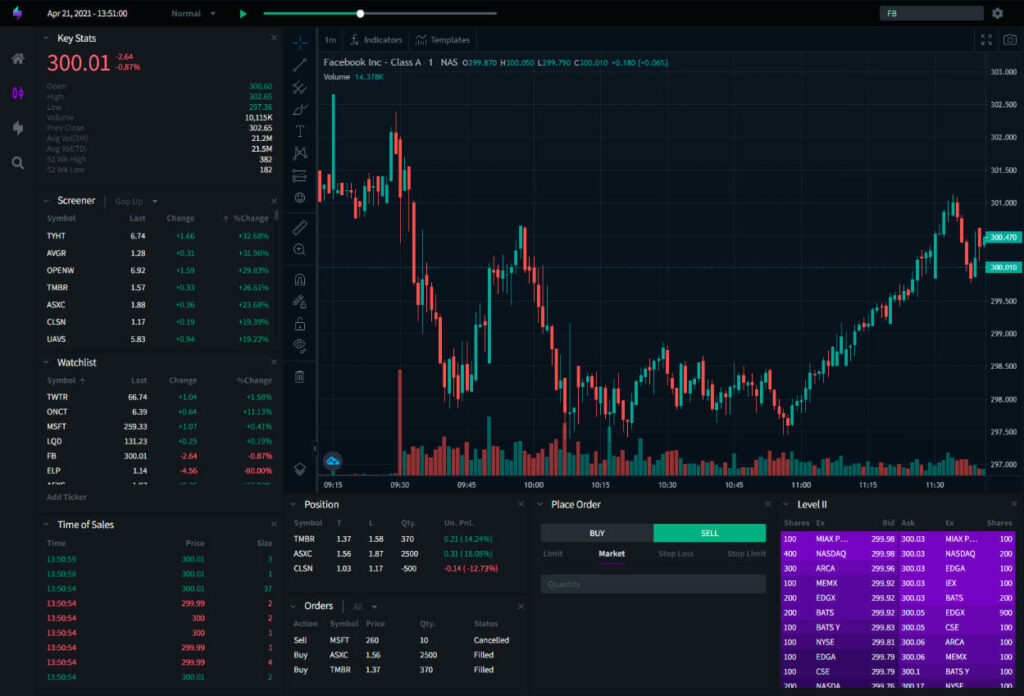In the fast-paced world of trading, having the right tools at your disposal can make all the difference between success and failure. Enter trading simulators—powerful platforms designed to mimic real market conditions, allowing traders to practice, strategize, and hone their skills without the risk of losing actual capital.
But with a plethora of options available, how do you navigate through the noise and select a simulator that aligns with your unique needs? Whether youre a novice eager to grasp the basics or an experienced investor looking to test advanced strategies, making an informed choice is pivotal. This guide will illuminate key considerations, enabling you to sift through various simulators effectively and find the one that not only meets your requirements but also enhances your trading prowess.
Let’s embark on this journey to unlock the potential of trading simulators.
Introduction to Trading Simulators

In the fast-paced world of finance, trading simulators have emerged as invaluable tools for both budding investors and seasoned traders alike. These platforms allow users to mimic real-market conditions without the risk of losing actual capital, providing a safe space to test strategies and hone skills.
Whether you\’re deciphering complex technical indicators or exploring various trading styles, simulators act as your personal training ground—an environment where you can experiment, learn, and evolve. One of the key features that can significantly enhance your trading practice is the use of replay chart free software. This tool enables you to replay historical market data, allowing you to test your strategies in past market conditions as if they were unfolding in real-time.
By incorporating replay chart functionality, trading simulators offer a deeper, more interactive learning experience that helps you better understand market dynamics and refine your approach. But navigating through the multitude of options available can be daunting.
With various features, user interfaces, and market simulations, how do you determine which trading simulator aligns best with your unique needs? Understanding the core principles and functionalities of trading simulators—including the availability of replay chart free software—is essential to making an informed choice that supports your trading journey.
Types of Trading Simulators

When exploring the diverse landscape of trading simulators, its essential to understand the various types available to cater to different trading styles and objectives. For instance, some platforms provide incredibly realistic market conditions, replete with live data and the volatility that real traders face, allowing users to practice strategies in scenarios that mirror actual trading environments.
Others may focus on specific assets, such as stocks, options, or cryptocurrencies, enabling targeted practice. There are also beginner-friendly simulators that simplify processes, offering guided tutorials and support for those just entering the trading world.
Additionally, advanced simulators provide sophisticated analytics and risk management tools, appealing to experienced traders seeking to refine their skills and test complex strategies without financial repercussions. Each type serves its unique purpose, ensuring that traders can find a simulator tailored to their level of expertise and trading aspirations.
User Reviews and Recommendations

User reviews and recommendations serve as invaluable resources when selecting the right trading simulator for your unique needs. Potential users often highlight aspects such as user interface, realism in trading scenarios, and the breadth of available assets.
Some users rave about simulators that offer a seamless mobile experience, allowing them to practice trading strategies on the go. Others emphasize the importance of community features, where they can exchange insights and strategies with fellow traders.
While one user might find a specific platform perfect for practicing day trading, another may recommend a different simulator for long-term investment approaches. Reading through diverse experiences and preferences helps prospective traders navigate the myriad of choices, honing in on the simulator that aligns most closely with their trading style and goals.
Ultimately, the collective wisdom found in these reviews not only highlights each simulators strengths and weaknesses but also sheds light on the personal journey of trading that many aspire to master.
Conclusion
In conclusion, selecting the right trading simulator is a crucial step toward achieving your trading goals, whether you are a novice looking to learn the ropes or an experienced trader honing your skills. By carefully considering factors such as your trading style, features of the simulator, ease of use, and cost, you can find a platform that meets your specific needs.
Additionally, options like replay chart free software can provide invaluable insights, allowing you to analyze past trades and refine your strategies without the pressure of real-time market conditions. By choosing the right simulator, you can build a strong foundation for your trading journey and improve your chances of success in the dynamic world of trading.


